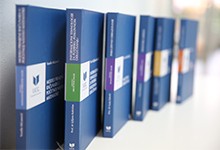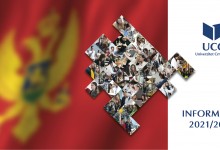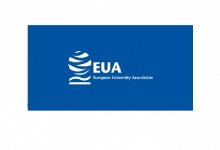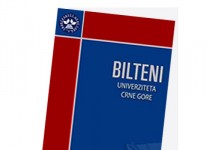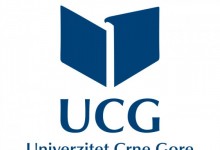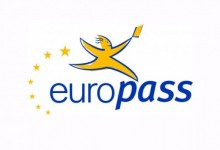Faculty of Metalurgy and Technology / / TERMODINAMIKA - VIŠI KURS
| Course: | TERMODINAMIKA - VIŠI KURS/ |
| Course ID | Course status | Semester | ECTS credits | Lessons (Lessons+Exercises+Laboratory) |
| 10800 | Obavezan | 1 | 8 | 3+2+0 |
| Programs | |
| Prerequisites | No prerequisites |
| Aims | Using the results of statistical thermodynamics, establish a connection between classical and molecular thermodynamics. Understanding the thermodynamics of processes and phenomena that occur in the solid phase and the interaction of the solid phase with other phases. |
| Learning outcomes | After successful completion of this course, the student will be able to: - Thermodynamically analyses complex technological processes; - Solves thermodynamic problems by connecting classical and molecular approaches; - Adapt the technological project to new or changed thermodynamic conditions; - Interdisciplinary approaches to solving other physical and chemical problems; - Explain the properties of the material and plan the processing of the material to obtain the desired properties; - Innovatively combines knowledge in practical problem-solving. |
| Lecturer / Teaching assistant | prof. dr Veselinka Grudić, prof. dr Vanja Asanović |
| Methodology | Lectures, exercises, homework assignments, quizzes, project, consultation, midterm exams and final exam. |
| Plan and program of work | |
| Preparing week | Preparation and registration of the semester |
| I week lectures | Introduction to statistical thermodynamics. Intermolecular forces. Molecular theory. |
| I week exercises | Examples: Intermolecular forces. Molecular theory. |
| II week lectures | Fugacities in gas mixtures. |
| II week exercises | Examples: Fugacities in gas mixtures. |
| III week lectures | Fugacities in liquid mixtures. |
| III week exercises | Examples: Fugacities in liquid mixtures. |
| IV week lectures | Excess functions and partial miscibility. UNIFAC equation for calculation of activity coefficients. |
| IV week exercises | Examples: Excess functions and partial miscibility. Consideration of project topics. |
| V week lectures | Models and theories of solutions. |
| V week exercises | Examples: Models and theories of solutions. |
| VI week lectures | Polymers. Equations of state for polymer solutions. |
| VI week exercises | Midterm exam 1. |
| VII week lectures | Thermodynamics of emulsions. |
| VII week exercises | Examples: Polymers. Equations of state for polymer solutions. |
| VIII week lectures | Solubilities of gases in liquids. Solubilities of solids in liquids. |
| VIII week exercises | Make-up Midterm exam 1. |
| IX week lectures | High-pressure phase equilibria. |
| IX week exercises | Examples: Solubilities of gases in liquids. |
| X week lectures | Molecular simulation. |
| X week exercises | Molecular simulation. |
| XI week lectures | Thermodynamics of surfaces and interfaces. Anisotropy of surface energy. Internal boundaries - chemical discontinuity. Internal boundaries - structural discontinuity. |
| XI week exercises | Midterm exam 2. |
| XII week lectures | Stability of crystal disorder. Defect complexes in metals. |
| XII week exercises | Examples: Solubilities of solids in liquids. |
| XIII week lectures | Equilibrium constants for defect reactions. |
| XIII week exercises | Make-up Midterm exam 2. |
| XIV week lectures | Defects in nonstoichiometric compounds. |
| XIV week exercises | Essay presentation. |
| XV week lectures | Preparation for final exam. |
| XV week exercises | Essay presentation. |
| Student workload | Per week: 8 credits x 40/30 hours = 10 hours and 40 minutes Total workload for the course: 8 x 30 = 240 hours |
| Per week | Per semester |
| 8 credits x 40/30=10 hours and 40 minuts
3 sat(a) theoretical classes 0 sat(a) practical classes 2 excercises 5 hour(s) i 40 minuts of independent work, including consultations |
Classes and final exam:
10 hour(s) i 40 minuts x 16 =170 hour(s) i 40 minuts Necessary preparation before the beginning of the semester (administration, registration, certification): 10 hour(s) i 40 minuts x 2 =21 hour(s) i 20 minuts Total workload for the subject: 8 x 30=240 hour(s) Additional work for exam preparation in the preparing exam period, including taking the remedial exam from 0 to 30 hours (remaining time from the first two items to the total load for the item) 48 hour(s) i 0 minuts Workload structure: 170 hour(s) i 40 minuts (cources), 21 hour(s) i 20 minuts (preparation), 48 hour(s) i 0 minuts (additional work) |
| Student obligations | Students are required to attend classes, do their homework, submit essays and take the midterm exams. |
| Consultations | Tuesday and Thursday, 9:00 - 11:00. |
| Literature | J. M. Prausnitz, R. N. Lichtenthaler, E. G. de Azevedo, Molecular Thermodynamics of Fluid-Phase Equilibria, 3rd ed., Prentice Hall, New Jersey, 1998. B.E. Poling, J.M. Prausnitz, J.P. OConnell, The Properties of Gases and Liquids, 5th ed., McGraw-Hill, New York, 2001. R. A. Swalin, Thermodynamics of Solids, ed. J. E. Burke, B. Chalmers, J. A. Krumhansl, Wiley-Interscience, John Wiley and Sons, New York, 1972. |
| Examination methods | Two essays (10 points each); Two Midterm exams (15 points each, total 30 points); Final exam (50 points); Passing grade is obtained if at least 50 points are collected. |
| Special remarks | - |
| Comment | - |
| Grade: | F | E | D | C | B | A |
| Number of points | less than 50 points | greater than or equal to 50 points and less than 60 points | greater than or equal to 60 points and less than 70 points | greater than or equal to 70 points and less than 80 points | greater than or equal to 80 points and less than 90 points | greater than or equal to 90 points |
Faculty of Metalurgy and Technology / / KINETIKA - VIŠI KURS
| Course: | KINETIKA - VIŠI KURS/ |
| Course ID | Course status | Semester | ECTS credits | Lessons (Lessons+Exercises+Laboratory) |
| 10801 | Obavezan | 1 | 8 | 3+2+0 |
| Programs | |
| Prerequisites | - |
| Aims | Acquaintance of students with differential and integral forms of the rate laws of complex chemical reactions, as well as methods of determining the reaction order. Acquiring knowledge about the influence of temperature on the kinetics of chemical reactions and about the theoretical settings of the kinetics of reactions based on the theory of collisions, the theory of transition states and the theory of monomolecular reactions. |
| Learning outcomes | |
| Lecturer / Teaching assistant | Full professor Ivana Bošković |
| Methodology | Lectures, calculation exercises. Test. Seminar paper. Consultations. |
| Plan and program of work | |
| Preparing week | Preparation and registration of the semester |
| I week lectures | Introduction. Chemical kinetics, chemical thermodynamics and conversion. Quantitative description of conversion. |
| I week exercises | Calculation examples accompanying the theoretical teaching. |
| II week lectures | Conversion of reactants to products. Elementary reactions. Complex kinetic systems |
| II week exercises | Calculation examples accompanying the theoretical teaching. |
| III week lectures | Reaction mechanism. Conversion of irreversible chemical reactions. |
| III week exercises | Calculation examples accompanying the theoretical teaching. |
| IV week lectures | Differential and integral forms of the rate law of irreversible chemical reactions. |
| IV week exercises | Calculation examples accompanying the theoretical teaching. |
| V week lectures | Integral and differential methods of determining the order of the reaction. |
| V week exercises | Calculation examples accompanying the theoretical teaching. |
| VI week lectures | Physico-chemical methods in studying the kinetics of chemical reactions. |
| VI week exercises | Calculation examples accompanying the theoretical teaching. |
| VII week lectures | The rate of complex reactions. Comparison of the rate laws of elementary and complex reactions |
| VII week exercises | Calculation examples accompanying the theoretical teaching. |
| VIII week lectures | Reversible reactions. |
| VIII week exercises | Calculation examples accompanying the theoretical teaching. |
| IX week lectures | Consecutive reactions |
| IX week exercises | Calculation examples accompanying the theoretical teaching. |
| X week lectures | Chain reactions |
| X week exercises | Calculation examples accompanying the theoretical teaching. |
| XI week lectures | Parallel reactions. |
| XI week exercises | Calculation examples accompanying the theoretical teaching. |
| XII week lectures | The influence of temperature on the rate of chemical reactions (activation energy of complex chemical reactions, dependence of activation energy on temperature) |
| XII week exercises | Calculation examples accompanying the theoretical teaching. |
| XIII week lectures | Reactions in solutions (kinetics of charged and uncharged reaction participants and the influence of physico-chemical properties of solvents on reaction kinetics). |
| XIII week exercises | Calculation examples accompanying the theoretical teaching. |
| XIV week lectures | The rate constant and pre-exponential factor in the collision theory of bimolecular reactions. |
| XIV week exercises | Test |
| XV week lectures | Classification of basic types of catalytic reactions. Catalytic reactions on surfaces. Heterogeneous catalysis. |
| XV week exercises | Seminar paper. |
| Student workload | Weekly: 8 credits x 40/30 = 10 hours and 40 minutes In the semester: (10 hours and 40 minutes) x 16= 170 hours and 40 minutes |
| Per week | Per semester |
| 8 credits x 40/30=10 hours and 40 minuts
3 sat(a) theoretical classes 0 sat(a) practical classes 2 excercises 5 hour(s) i 40 minuts of independent work, including consultations |
Classes and final exam:
10 hour(s) i 40 minuts x 16 =170 hour(s) i 40 minuts Necessary preparation before the beginning of the semester (administration, registration, certification): 10 hour(s) i 40 minuts x 2 =21 hour(s) i 20 minuts Total workload for the subject: 8 x 30=240 hour(s) Additional work for exam preparation in the preparing exam period, including taking the remedial exam from 0 to 30 hours (remaining time from the first two items to the total load for the item) 48 hour(s) i 0 minuts Workload structure: 170 hour(s) i 40 minuts (cources), 21 hour(s) i 20 minuts (preparation), 48 hour(s) i 0 minuts (additional work) |
| Student obligations | Students are required to attend classes, do test and defend a seminar work |
| Consultations | Consultations are scheduled in agreement with the students. |
| Literature | 1.J.I.Steinfeld, J.S.Francisko, W.L.Hase, Chemical Kinetics and Dynamics, New Jersey 1989. |
| Examination methods | - Activity during lectures: (0 - 10 points), - Test: (0 - 30 points), - Seminar paper: (0 - 10 points), - Final exam: (0 - 50 points). |
| Special remarks | - |
| Comment | - |
| Grade: | F | E | D | C | B | A |
| Number of points | less than 50 points | greater than or equal to 50 points and less than 60 points | greater than or equal to 60 points and less than 70 points | greater than or equal to 70 points and less than 80 points | greater than or equal to 80 points and less than 90 points | greater than or equal to 90 points |
Faculty of Metalurgy and Technology / / MODELIRANJE PROCESA U EKSTRAKTIVNOJ METAL. ČELIKA
| Course: | MODELIRANJE PROCESA U EKSTRAKTIVNOJ METAL. ČELIKA/ |
| Course ID | Course status | Semester | ECTS credits | Lessons (Lessons+Exercises+Laboratory) |
| 10802 | Izborni | 1 | 7 | 3+1+1 |
| Programs | |
| Prerequisites | |
| Aims | |
| Learning outcomes | |
| Lecturer / Teaching assistant | |
| Methodology |
| Plan and program of work | |
| Preparing week | Preparation and registration of the semester |
| I week lectures | |
| I week exercises | |
| II week lectures | |
| II week exercises | |
| III week lectures | |
| III week exercises | |
| IV week lectures | |
| IV week exercises | |
| V week lectures | |
| V week exercises | |
| VI week lectures | |
| VI week exercises | |
| VII week lectures | |
| VII week exercises | |
| VIII week lectures | |
| VIII week exercises | |
| IX week lectures | |
| IX week exercises | |
| X week lectures | |
| X week exercises | |
| XI week lectures | |
| XI week exercises | |
| XII week lectures | |
| XII week exercises | |
| XIII week lectures | |
| XIII week exercises | |
| XIV week lectures | |
| XIV week exercises | |
| XV week lectures | |
| XV week exercises |
| Student workload | |
| Per week | Per semester |
| 7 credits x 40/30=9 hours and 20 minuts
3 sat(a) theoretical classes 1 sat(a) practical classes 1 excercises 4 hour(s) i 20 minuts of independent work, including consultations |
Classes and final exam:
9 hour(s) i 20 minuts x 16 =149 hour(s) i 20 minuts Necessary preparation before the beginning of the semester (administration, registration, certification): 9 hour(s) i 20 minuts x 2 =18 hour(s) i 40 minuts Total workload for the subject: 7 x 30=210 hour(s) Additional work for exam preparation in the preparing exam period, including taking the remedial exam from 0 to 30 hours (remaining time from the first two items to the total load for the item) 42 hour(s) i 0 minuts Workload structure: 149 hour(s) i 20 minuts (cources), 18 hour(s) i 40 minuts (preparation), 42 hour(s) i 0 minuts (additional work) |
| Student obligations | |
| Consultations | |
| Literature | |
| Examination methods | |
| Special remarks | |
| Comment |
| Grade: | F | E | D | C | B | A |
| Number of points | less than 50 points | greater than or equal to 50 points and less than 60 points | greater than or equal to 60 points and less than 70 points | greater than or equal to 70 points and less than 80 points | greater than or equal to 80 points and less than 90 points | greater than or equal to 90 points |
Faculty of Metalurgy and Technology / / FAZNE TRANSFORMACIJE (ODABRANA POGLAVLJA)
| Course: | FAZNE TRANSFORMACIJE (ODABRANA POGLAVLJA)/ |
| Course ID | Course status | Semester | ECTS credits | Lessons (Lessons+Exercises+Laboratory) |
| 10803 | Izborni | 2 | 7 | 3+1+1 |
| Programs | |
| Prerequisites | No prerequisites |
| Aims | Studying the fundamental phenomena to understand the correlation among thermodynamics, kinetics, mass transfer, mechanical properties and the creation of microstructure. |
| Learning outcomes | After successful completion of this course, students will be able to: - Analyze the problem of microstructural stability; - Apply the Johnson-Mehl-Avrami equation to describe the kinetics of phase transformations; - Explain rapid solidification; explain precipitation from a supersaturated solid solution and the growth of a precipitate; analyze the bainite transformation; - Analyze diffusionless transformations; identify thermoelastic and pseudoelastic effects of martensitic transformations; - Solve complex problems that arise in practice in metallurgy, materials and chemical technology. |
| Lecturer / Teaching assistant | prof. dr Vanja Asanović |
| Methodology | Lectures, exercises. Essays, consultation. |
| Plan and program of work | |
| Preparing week | Preparation and registration of the semester |
| I week lectures | The problem of microstructure stability. Homogeneous and heterogeneous phase transformations. |
| I week exercises | Quantitative microscopy. |
| II week lectures | Driving force for microstructural changes. Mechanisms of microstructure change. Johnson-Mehl-Avrami equation. |
| II week exercises | Quantitative microscopy. |
| III week lectures | Structural instability due to free energy. Instability due to the non-uniform arrangement of dissolved atoms. |
| III week exercises | Diffusion equations. Consideration of essay topics. |
| IV week lectures | Precipitation from supersaturated solid solution. Growth of a precipitate from a supersaturated solid solution. Decomposition of secondary phases. |
| IV week exercises | Kinetics of growth of secondary phases along grain boundaries. Growth kinetics of the Widmanstätten structure. |
| V week lectures | Metastable alloys. Rapid solidification. Cooling rate and subcooling. |
| V week exercises | Case studies. |
| VI week lectures | Metastable phase diagrams. |
| VI week exercises | Midterm exam 1. |
| VII week lectures | Metastable and quasi-crystalline phases. |
| VII week exercises | Segregation. |
| VIII week lectures | Amorphous alloys. Crystallization. |
| VIII week exercises | Make-up midterm exam 1. |
| IX week lectures | Structural instability due to deformation. |
| IX week exercises | Case studies. |
| X week lectures | Microstructural instability due to boundary surfaces. |
| X week exercises | Case studies. |
| XI week lectures | Selected examples of microstructural instability causes. |
| XI week exercises | Midterm exam 2. |
| XII week lectures | Bainite transformation. |
| XII week exercises | Case studies. |
| XIII week lectures | Classification of diffusionless transformations. Martensitic transformation. |
| XIII week exercises | Make-up midterm exam 2. |
| XIV week lectures | Thermoelastic and pseudoelastic effects of martensitic transformations. |
| XIV week exercises | Presentation of the first essay. |
| XV week lectures | Preparation for the final exam. |
| XV week exercises | Presentation of the second essay. |
| Student workload | Per week: 7 credits x 40/30 hours = 9 hours and 20 minutes. Total workload for the course: 7 x 30 = 210 hours. |
| Per week | Per semester |
| 7 credits x 40/30=9 hours and 20 minuts
3 sat(a) theoretical classes 1 sat(a) practical classes 1 excercises 4 hour(s) i 20 minuts of independent work, including consultations |
Classes and final exam:
9 hour(s) i 20 minuts x 16 =149 hour(s) i 20 minuts Necessary preparation before the beginning of the semester (administration, registration, certification): 9 hour(s) i 20 minuts x 2 =18 hour(s) i 40 minuts Total workload for the subject: 7 x 30=210 hour(s) Additional work for exam preparation in the preparing exam period, including taking the remedial exam from 0 to 30 hours (remaining time from the first two items to the total load for the item) 42 hour(s) i 0 minuts Workload structure: 149 hour(s) i 20 minuts (cources), 18 hour(s) i 40 minuts (preparation), 42 hour(s) i 0 minuts (additional work) |
| Student obligations | Students are required to attend classes, submit essays and take the midterm exams. |
| Consultations | Tuesday and Thursday, 09:00 - 11:00. |
| Literature | J.W.Martin, R.D.Doherty, B. Cantor, Stability of Microstructure in Metallic Systems, Cambr. Univer. Press, 1997. J.W.Christian, The Theory of Transformations in Metals and Alloys, Elsevier Science Ltd., Oxford, 2002. K.A Jackson, Kinetic Processes: Crystal Growth, Diffusion and Phase Transf. in Materils, Wiley-VCH Ver. GmbH & Co. KGaA., 2004. H.U.Aaronson, Lectures on the Theory of Phase Transformations, Mineral, Metals and Mat. Soc., 2000. |
| Examination methods | Two essays (10 points each, total of 10 points); two midterm exams (15 points each, total of 30 points); Final exam (50 points); Passing grade is obtained if at least 50 points are collected. |
| Special remarks | - |
| Comment | - |
| Grade: | F | E | D | C | B | A |
| Number of points | less than 50 points | greater than or equal to 50 points and less than 60 points | greater than or equal to 60 points and less than 70 points | greater than or equal to 70 points and less than 80 points | greater than or equal to 80 points and less than 90 points | greater than or equal to 90 points |
Faculty of Metalurgy and Technology / / MEHANIZMI OJAČAVANJA I DIZAJN MATERIJALA
| Course: | MEHANIZMI OJAČAVANJA I DIZAJN MATERIJALA/ |
| Course ID | Course status | Semester | ECTS credits | Lessons (Lessons+Exercises+Laboratory) |
| 10804 | Izborni | 1 | 7 | 3+1+1 |
| Programs | |
| Prerequisites | No prerequisites |
| Aims | Study of structural changes to understand the relationship between thermomechanical processing, structure and mechanical properties of materials. |
| Learning outcomes | After successful completion of this course, students will be able to: - Explain microstructure changes due to the application of different thermomechanical processing procedures; - Analyze material properties after performing the various thermomechanical processing procedures; - Apply different techniques of material strengthening; - In practice, apply advanced knowledge about fracture, fatigue and creep of materials in the area of material design; - In the context of interaction between materials and the environment, analyze the impact of materials on the environment and the impact of the environment on the properties of materials to prevent material degradation and environmental pollution. |
| Lecturer / Teaching assistant | prof. dr Nada Jauković i prof. dr Vanja Asanović |
| Methodology | Lectures, exercises. Essays, consultation. |
| Plan and program of work | |
| Preparing week | Preparation and registration of the semester |
| I week lectures | Dislocation theory. The force on a dislocation. |
| I week exercises | Dislocations in metal crystals. |
| II week lectures | Dislocations and plastic deformation. |
| II week exercises | Slip systems in different crystal forms. |
| III week lectures | Dislocation density and the stress. Dislocation velocity. Strengthening mechanisms. Dislocation mechanism of deformation strengthening. |
| III week exercises | Consideration of essay topics. |
| IV week lectures | Grain boundary strengthening. Solid solution strengthening. |
| IV week exercises | Case studies. |
| V week lectures | Precipitation and dispersion strengthening. |
| V week exercises | Case studies. |
| VI week lectures | Deformation and strengthening of two-phase alloys. Fiber reinforcement. Strengthening by crystal imperfections. |
| VI week exercises | Midterm exam 1. |
| VII week lectures | Thermally activated plastic deformation. Superplasticity. |
| VII week exercises | Case studies. |
| VIII week lectures | Material fatigue. |
| VIII week exercises | Make-up midterm exam 1. |
| IX week lectures | Mechanical properties of intermetallic compounds. |
| IX week exercises | Case studies. |
| X week lectures | Materials fracture. |
| X week exercises | Case studies. |
| XI week lectures | Design and cost analysis. Selection of materials for different purposes. |
| XI week exercises | Midterm exam 2. |
| XII week lectures | Fracture analysis: causes and prevention. |
| XII week exercises | Case studies. |
| XIII week lectures | Interaction materials - environment. Corrosion. Solid-gas reactions. Friction and wear. Damage caused by radiation. |
| XIII week exercises | Make-up midterm exam 2. |
| XIV week lectures | New materials – potential for innovation. |
| XIV week exercises | Presentation of the first essay. |
| XV week lectures | Preparation for final exam. |
| XV week exercises | Presentation of the second essay. |
| Student workload | Per week: 8 credits x 40/30 hours = 10 hours and 40 minutes. Total workload for the course: 8 x 30 = 240 hours. |
| Per week | Per semester |
| 7 credits x 40/30=9 hours and 20 minuts
3 sat(a) theoretical classes 1 sat(a) practical classes 1 excercises 4 hour(s) i 20 minuts of independent work, including consultations |
Classes and final exam:
9 hour(s) i 20 minuts x 16 =149 hour(s) i 20 minuts Necessary preparation before the beginning of the semester (administration, registration, certification): 9 hour(s) i 20 minuts x 2 =18 hour(s) i 40 minuts Total workload for the subject: 7 x 30=210 hour(s) Additional work for exam preparation in the preparing exam period, including taking the remedial exam from 0 to 30 hours (remaining time from the first two items to the total load for the item) 42 hour(s) i 0 minuts Workload structure: 149 hour(s) i 20 minuts (cources), 18 hour(s) i 40 minuts (preparation), 42 hour(s) i 0 minuts (additional work) |
| Student obligations | Students are required to attend classes, submit essays and take the midterm exams. |
| Consultations | Tuesday and Thursday, 09:00 - 11:00. |
| Literature | J. M. Prausnitz, R. N. Lichtenthaler, E. G. de Azevedo, Molecular Thermodynamics of Fluid-Phase Equilibria, 3rd ed., Prentice Hall, New Jersey, 1998. B.E. Poling, J.M. Prausnitz, J.P. OConnell, The Properties of Gases and Liquids, 5th ed., McGraw-Hill, New York, 2001. R. A. Swalin, Thermodynamics of Solids, ed. J. E. Burke, B. Chalmers, J. A. Krumhansl, Wiley-Interscience, John Wiley and Sons, New York, 1972. |
| Examination methods | Two essays (10 points per each, a total of 20 points); two midterm exams (15 points each, a total of 30 points); Final exam (50 points); a Passing grade is obtained if at least 50 points are collected. |
| Special remarks | - |
| Comment | - |
| Grade: | F | E | D | C | B | A |
| Number of points | less than 50 points | greater than or equal to 50 points and less than 60 points | greater than or equal to 60 points and less than 70 points | greater than or equal to 70 points and less than 80 points | greater than or equal to 80 points and less than 90 points | greater than or equal to 90 points |
Faculty of Metalurgy and Technology / / FENOMENI SINTEROVANJA
| Course: | FENOMENI SINTEROVANJA/ |
| Course ID | Course status | Semester | ECTS credits | Lessons (Lessons+Exercises+Laboratory) |
| 10805 | Izborni | 1 | 7 | 3+1+1 |
| Programs | |
| Prerequisites | No mutual dependency |
| Aims | The objectives are focused on training the students to deeply understand mechanism of sintering and to apply them in accordance with treated material and its performances |
| Learning outcomes | After the completion of this course, student should: 1. Fully understand sintering phenomena 2. Be capable to prove a certain sintering mechanism based on structure of the sample 3.Deeply understand different types of sintering and processes of material transport 4.Understand and apply sintering regimes on different samples: light, heavy, refractory metals as well as Fe alloys |
| Lecturer / Teaching assistant | Prof. dr Mira Vukčević |
| Methodology | Lectures, exercises, debates, assay, final exam |
| Plan and program of work | |
| Preparing week | Preparation and registration of the semester |
| I week lectures | General characteristics of metal sintering process |
| I week exercises | Crystal lattice defects, vacancies, dislocations |
| II week lectures | Characteristics of real lattice, processes of position change |
| II week exercises | Characteristics of real lattice, discussion with prepared data and photographs |
| III week lectures | Sintering in the presence of solid phase |
| III week exercises | Forming and growth of the contacts, densification processes |
| IV week lectures | Contacts densification velocity, grain borders, sintering of two or more phases in solid state |
| IV week exercises | Examples from different experiments |
| V week lectures | The basic elements of the sintering in the presence of liquid phase, analysis of the experimental microstructure, examples |
| V week exercises | Sintering in the presence of liquid phase |
| VI week lectures | Sintering in the presence of liquid phase: processes in early stage of sintering, processes in the interim sintering stage, final stage of sintering |
| VI week exercises | 1st. Colloquium |
| VII week lectures | Special cases of the sintering in the presence of liquid phase |
| VII week exercises | Examples for supersolidus sintering, infiltration, reaction sintering |
| VIII week lectures | Strengthened sintered material-copper based |
| VIII week exercises | Dispersed strengthened Cu Alloys |
| IX week lectures | Light-metals-based sintered materials |
| IX week exercises | Sintered ultra light Al Alloys, Strength sintered Al alloys, refractory sintered Al alloys |
| X week lectures | Sintered refractory metals |
| X week exercises | Refractory and heavy metals |
| XI week lectures | The use of different hardener, SiC, intermetallides |
| XI week exercises | Examples |
| XII week lectures | Presentation of assays |
| XII week exercises | |
| XIII week lectures | Sintering of ceramics |
| XIII week exercises | Examples on sintering of ceramics |
| XIV week lectures | 2nd Colloquium |
| XIV week exercises | Corrective 2nd Colloquium |
| XV week lectures | |
| XV week exercises |
| Student workload | |
| Per week | Per semester |
| 7 credits x 40/30=9 hours and 20 minuts
3 sat(a) theoretical classes 1 sat(a) practical classes 1 excercises 4 hour(s) i 20 minuts of independent work, including consultations |
Classes and final exam:
9 hour(s) i 20 minuts x 16 =149 hour(s) i 20 minuts Necessary preparation before the beginning of the semester (administration, registration, certification): 9 hour(s) i 20 minuts x 2 =18 hour(s) i 40 minuts Total workload for the subject: 7 x 30=210 hour(s) Additional work for exam preparation in the preparing exam period, including taking the remedial exam from 0 to 30 hours (remaining time from the first two items to the total load for the item) 42 hour(s) i 0 minuts Workload structure: 149 hour(s) i 20 minuts (cources), 18 hour(s) i 40 minuts (preparation), 42 hour(s) i 0 minuts (additional work) |
| Student obligations | Presence during the lectures, Completion of exercises. Colloquia, assays, final written exam |
| Consultations | Tuesdays and Thursdays from 12a.m |
| Literature | 1.M.Mitkov, D.Božić, Z.Vujović, Metalurgija praha ( 1998) 2. R.German G.Messing, R.Cornwall, Sintering technology ( edited) (2013) 3. Z.Z.F, Sintering of advanced materials ( 2021) 4.S-Joong, l.kang, Sintering: Densification, Grain Growth, Microstructure ( 2022) |
| Examination methods | Colloquia, assays, final exam |
| Special remarks | - |
| Comment | - |
| Grade: | F | E | D | C | B | A |
| Number of points | less than 50 points | greater than or equal to 50 points and less than 60 points | greater than or equal to 60 points and less than 70 points | greater than or equal to 70 points and less than 80 points | greater than or equal to 80 points and less than 90 points | greater than or equal to 90 points |




